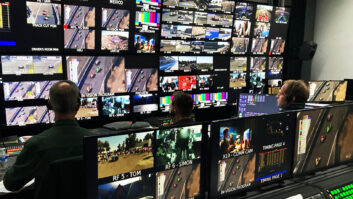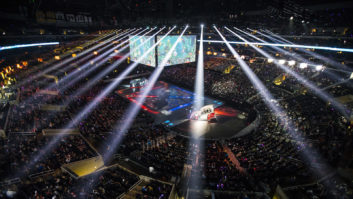In a very short space of time, esports has become arguably the second truly global sport after football. It is growing at an unprecedented rate – in 2017, the global esports market was valued at $700 million, and is forecast to increase to over $2 billion by 2023. Broadcast vendors are paying close attention because this is an area where there are viewers, particularly a young demographic that is increasingly difficult for traditional broadcasters to reach. And while revenues for esports events up till now have largely come from areas like sponsorship, advertising, ticket sales and merchandising, the fastest growing source of revenue is now media rights.
There are many things about esports that are similar to conventional sports. There is competition, there are rules, there is drama created by rivalry, plus tension and release between players as they interact with the game, announcers that narrate the gameplay and commentators that analyse the player’s choices. These are the elements that content directors use to create narratives that capture the viewers’ imagination and make them eager for more.
However, there are unique production challenges that come with an esports event that are typically not a part of a traditional sports broadcast. In contrast to a field or court sport, where group activity means a few cameras can capture all the action, esports competitions require coverage of each individual player at all times – so many additional cameras are involved in the production, including PoV cameras.
In addition, the requirement for high-quality content is much more extreme in esports, since viewers often play the same game at home and are used to seeing it as an uncompressed version. Producers also need to be able to switch live between real-world players and the actual game on a computer screen, moving between different and often non-broadcast standard resolutions and frame-rates without a break in coverage or an obvious switch in quality.
Most esports events are streamed and streaming of gaming in general has standardised on 1080/60p. It would be a mistake to think that the quality of the production is any less important because the content is streamed. That said, while higher resolutions and frame rates are nice, it is better to have a stable stream than to drop frames or start buffering, resulting in the dreaded “lag”. Viewers are quick to point out technical difficulties in the production and will move on when presented with a poor experience.
With software-driven processing and IP-based production, solutions like NewTek’s VMC1 live production system and the NDI protocol are allowing esports producers to move from makeshift studio set-ups to professional broadcast equipment for every stage of production, while reducing the complexity and cost of mixing gaming PCs and consoles with professional video gear – and meeting consumers’ demands for high quality.







